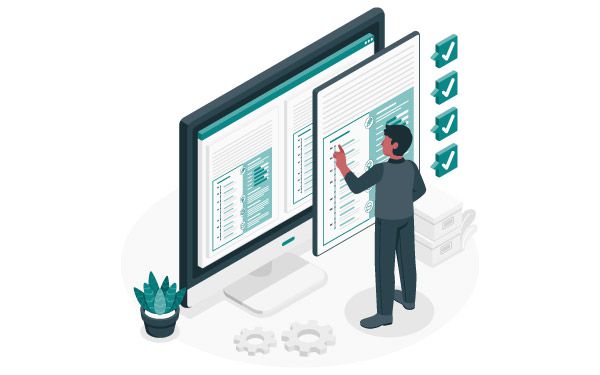Smarter Publishing for Life Sciences: Why Automation Matters

In the life sciences industry, documents are at the heart of everything clinical study reports, regulatory submissions, risk assessments, safety updates, and more. Each of these documents plays a crucial role in ensuring patient safety and regulatory compliance.
But here’s the challenge: these documents aren’t just simple text files. They must follow strict formatting rules, meet global regulatory standards like eCTD compliance, and go through rigorous review and quality control checks before submission. Even the smallest oversight – like a missing hyperlink or an incorrect bookmark can trigger delays, rejection, or rework.
For many years, most small and mid-sized companies handled these tasks manually. Teams spent countless hours formatting, reviewing, and preparing documents, one section at a time. But with regulatory timelines becoming tighter and submissions more complex, manual work is proving to be unsustainable.
This is why automation has become one of the most important developments in life sciences document processing today.
The Rise of Automation in Regulatory Publishing
Automation is no longer just a buzzword – it is actively reshaping how regulatory and medical writing teams manage documents. Instead of spending valuable time on repetitive corrections, professionals can now rely on technology to handle many of these steps.
Three areas where automation is driving the biggest impact are:
1. Regulatory Publishing Automation
Regulatory submissions must meet highly specific publishing standards. Preparing a submission package involves applying hundreds of rules – covering everything from bookmarks, hyperlinks, file structures, and sequence validation.
Regulatory publishing automation ensures these rules are consistently applied without human error. It can also automatically generate submission-ready files in formats required by agencies worldwide. This is especially important for eCTD compliance, where precision is non-negotiable.
2. Quality Control Automation
Traditionally, quality control required reviewers to manually check thousands of pages for broken links, inconsistent headings, or misplaced references. This process is slow and error-prone.
With quality control automation, documents can be scanned instantly for compliance issues. The system highlights errors, suggests corrections, and ensures nothing is missed before submission. This reduces rework, accelerates timelines, and improves confidence in the final package.
3. Formatting Automation
Formatting may sound simple, but it often causes major submission delays. Inconsistent table structures, mismatched fonts, and incorrect heading styles are common problems in regulatory documents.
Formatting automation eliminates these challenges by applying predefined templates and formatting rules across entire documents. What once took days of manual corrections can now be done in minutes.
Why Small Businesses Need This More Than Ever
Large pharmaceutical companies have long invested in enterprise platforms for publishing and document processing. These systems are powerful but also complex and expensive – often out of reach for smaller businesses.
Yet smaller firms face the exact same challenges:
- They need accurate, submission-ready documents.
- They must comply with eCTD and other global requirements.
- They cannot afford delays caused by formatting or QC errors.
For these organizations, cloud-based publishing software offers a practical solution. Unlike traditional enterprise systems, these platforms are easier to adopt, budget-friendly, and scalable. This makes them the ideal small business publishing solution – bringing enterprise-grade efficiency without the heavy costs.
How Cloud-Based Publishing Software Helps
Modern publishing platforms are built to fit the needs of today’s distributed, fast-moving teams. A few of the key advantages include:
- Accessibility – Being cloud-based means teams can collaborate from anywhere without complex installations.
- Scalability – As submission volumes grow, the software adapts without requiring major upgrades.
- Security – Cloud platforms ensure data protection with advanced access controls and compliance safeguards.
- Ease of use – Pre-configured templates and rules reduce training needs and make adoption simple for smaller teams.
For consultants and small businesses, this levels the playing field. They can now compete with larger organizations by using the same technology backbone for regulatory publishing automation, quality control automation, and formatting automation.
The Bigger Picture: Efficiency and Compliance Together
Regulatory success is not just about completing submissions – it’s about doing them efficiently, accurately, and repeatedly. Manual approaches often fail to scale, leading to burnout, higher costs, and missed deadlines.
Automation in life sciences document processing is not about replacing people; it is about supporting them. Instead of spending hours fixing bookmarks, updating headers, or checking hyperlinks, teams can focus on higher-value work like strategy, analysis, and regulatory planning.
This shift also strengthens compliance. By ensuring eCTD compliance and other standards are automatically applied, automation reduces the risk of costly rejection from agencies.
Looking Ahead
The future of regulatory publishing is clear: automation will continue to play a bigger role. As regulations evolve and submission volumes increase, both large and small organizations will need smarter, faster, and more reliable tools.
For smaller teams, the availability of cloud-based publishing software tailored to their needs is a game-changer. It brings the benefits of enterprise systems into an affordable, simplified package – making automation accessible to everyone.
By adopting these solutions, small firms and consultants can save time, cut costs, and stay compliant – without sacrificing quality.
Final Thoughts
The life sciences industry is changing quickly, and the demands on regulatory teams are only growing. Relying on manual publishing, QC, and formatting processes is no longer sustainable.
The answer lies in embracing regulatory publishing automation, quality control automation, and formatting automation as part of a smarter approach to life sciences document processing. For small businesses, adopting the right cloud-based publishing software can mean the difference between falling behind and staying competitive.
Automation isn’t just about efficiency – it’s about building confidence in every submission, no matter the size of the team.
Get the latest updates from Please+Publish
Recent Blogs
Previous Post
Next Post
CONNECT WITH US

Let's talk about how Please+Publish can help you






